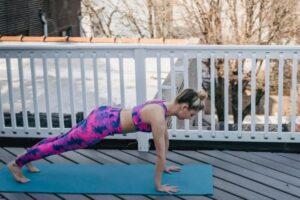
Core training targets muscles in abs, spine, sides, back, and hips.
Core training is actually not about the abs. In case you didn’t know, your core is the area between your diaphragm and your pelvic floor. That means a core exercise should use the muscles around your lower spine, sides and back of the waist, and around your hips in addition to the abdominal muscles. Core training includes the organs of the lower trunk like liver, spleen, stomach and most importantly the erector spinae to stabilize the spine. That probably means you need to re-evaluate a lot of the exercises in your current routine. This is because most exercises we see in the gym and at home focus purely on training your abs. When core muscles are involved, they control overt movements or stabilize neutral postures. (1)
(Jeon et al.2024) (Williams, 2023) (Cohen et al.2024) (Sridharan et al., 2023)
An example is walking
When you’re taking a step forward, your hip and knee move from a flexed position to an extended position. Hip and thigh(2) muscles move to produce hip flexion during the swing phase and then again to propel the foot onto the next step, (3) the erector spinae contracts to prevent you from falling forward and maintain an upright posture of the trunk. All during the process,(4) abdominal muscles function to stabilize the pelvis and belly. Step or march in place with a focus on abdominal muscles is a great exercise.
Effective Core Exercises
Side plank. Lie on your side and prop up your body in a line with your ankles and elbow resting on the floor. Again, a straight line is important. Push up off the ground and use your core to keep the body as rigid as possible. Hold for 60 seconds on each side.
Plank. Lie face down on the floor resting on your forearms. Push up off the floor, raising your body up onto your toes and resting on your elbows. Try to ensure your back is flat and your body is in a straight line from head to heels. Do not let your hips sag. This is a great exercise for the deep core stabilizers.
In order to develop the core muscles effectively, you need exercises that work more than just the superficial abdominals. The best comprehensive movements are those that challenge the body to remain stable and resist movement. Think of your core muscles as a cylinder round your spine. To be effective you need to target the front, sides and back. The following exercises are the best for achieving this. (Imran et al.2023) (Sedlmayr et al.2022)
Advanced Core Training Techniques
Your selection of exercises should reflect the function of the core and specific movement patterns. A high to moderate level of reps (8-20) is best as the primary goal is to develop endurance of the core and its stabilizing muscles. The workout can be progressed to a level of higher resistance and lower reps to improve force transfer. Due to the high level of neural control associated with core stability, quality of exercise is far more important than quantity. Therefore, it is best to perform short sets of 10-30 seconds focusing on precise form and ideal spinal/pelvic alignment with adequate rest between sets. A general progression is to perform exercises on the ground, hands and knees, plank position, and standing with the added load being placed on the movements that are more parallel to the ground.
Once you have conquered the basic exercises and developed a solid level of core strength, it is time to step it up a notch for a higher level of challenge. The solution to this is progression and increasing the overload. The overload can be increased through a number of means including lever length, adding weights, instability, speed of movement, and integration of movements. The core is designed to stabilize the spine and pelvis as well as transfer force between the upper and lower body, and the core functions to resist movement. Therefore, the primary goal of advanced core training is to resist movement of the spine and pelvis while learning to transfer more force between the upper and lower body.
Beginner:
Leg raises, all fours diagonal limb, Plank.
Intermediate:
Hanging knee raises (with torso rotation and straight leg), lying diagonal leg switch, Seated Russian twists, Side Bridge.
Advanced:
Hanging straight leg raise (with torso rotation and bodybuilders’ arch), Dragon flag, Ab-Wheel rollouts (feet on bench).
Below is a summary to help guide you on which exercises to include in your routine. This is tailored towards individual needs, as different people are at different levels in terms of core development. Step one is to assess which level you are at and how you are currently able to perform the most challenging exercises in that given level. Then provide the appropriate regression until you are able to do the full exercise. For example, if you cannot yet do the full dragon flag, begin by training the negative, then static hold, until you are able to do the full version.
Most of the exercises provided are performed from a hanging position.
Not everyone has access to a chin-up bar or is strong enough to do a hanging leg raise. In which case, exercises using the Ab-Wheel are a very good substitute. Ab-Wheels can be purchased from any good sport store and are inexpensive.
To conclude, there has never been such a diverse range of exercises that all focus on the core. When it comes to training the core the right way, the big exercises like squats, deadlifts, and standing military presses are great, but from a bodybuilding and aesthetics point of view, they do little to make the waist smaller or the muscles harder and more defined. Also, for people who don’t like weight training and only like to use bodyweight exercises or Swiss balls, now you know that the classic crunch is not good enough, and you have a whole array of exercises to choose from.


